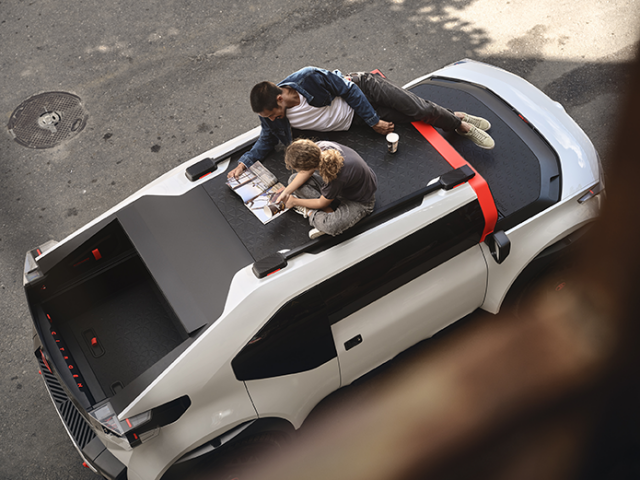Citroën Oli, a think tank on wheels

Although it will never be marketed, many of the ideas and innovations in Oli will feature in Citroën's future family electric vehicles. More than a concept car, this "laboratory on wheels" shows how to rethink family mobility in the future.
When Citroën embarked on the production of the Oli [all-ë] concept car ("all-electric"), it had a very specific objective in mind: to design a future electric vehicle that would be less polluting and just as efficient. To achieve this, the carmaker turned to responsible design, choosing to use recycled and recyclable materials. And it has worked in partnership with BASF to design innovative, lighter and more durable parts that partly incorporate 3D-printed elements.
High-performance materials for a light and economical vehicle
At first glance, Oli looks like a small, minimalist, cubic SUV designed for the city thanks to its compact size. The car has been designed to be as lightweight as possible in order to consume as little electricity as possible and increase its range, while being made from sustainable materials. The vehicle weighs only 1,000 kg (including the 40 kWh battery) and has a range of 400 km. Performance is limited to a maximum speed of 110 km/h. This significant weight saving was made on the bodywork. Basf developed a unique design based on recycled corrugated cardboard for the occasion. This cardboard creates a honeycomb structure with fibreglass reinforcement panels, coated with Elastoflex® polyurethane resin and covered with a protective layer of Elastocoat®. This highly-technical material is "stronger than steel" according to Citroën, and the car’s body weighs half as much as a conventional car body with the same surface area.
Its reduced glazed surface also allows it to save weight, while reducing air conditioning needs thanks to the reduced impact of solar radiation inside the car.
Eco-design and sustainability
Inside the car, most of the equipment - seats, headrests, storage, etc. - is made of flexible and recyclable TPU (thermoplastic polyurethane), while other elements, such as the seat backs, are 3D-printed in the same material. Because they are extremely lightweight, they are all easy to assemble and disassemble and can be recycled together: a further step towards a sustainable single-material design. On the floor is a one-piece modular floor covering made from lightweight yet durable expanded thermoplastic polyurethane (E-TPU.
Many of the body parts (front doors and windows, bumpers and wheel arch contours) are effectively interchangeable (they can be used on both the left and right sides of the vehicle), reducing costs and the use of raw materials.
The dashboard is also reduced to the strict minimum, featuring 34 parts instead of the 75 parts used in a similar model. No more screens and multiple controls; navigation and all connected actions are done through a smartphone, while it is possible to listen to music through the car’s built-in Bluetooth speaker.
The tyres, developed by Goodyear, are not to be outdone and are almost entirely made from recycled materials.
In short, this is a sensible and responsible vehicle that makes the most of sustainable materials. Designed with recycled and recyclable parts to extend its life, Oli is full of intelligent but above all pragmatic ideas to reduce the weight and complexity of future vehicles.
More information:
https://www.citroen.fr




